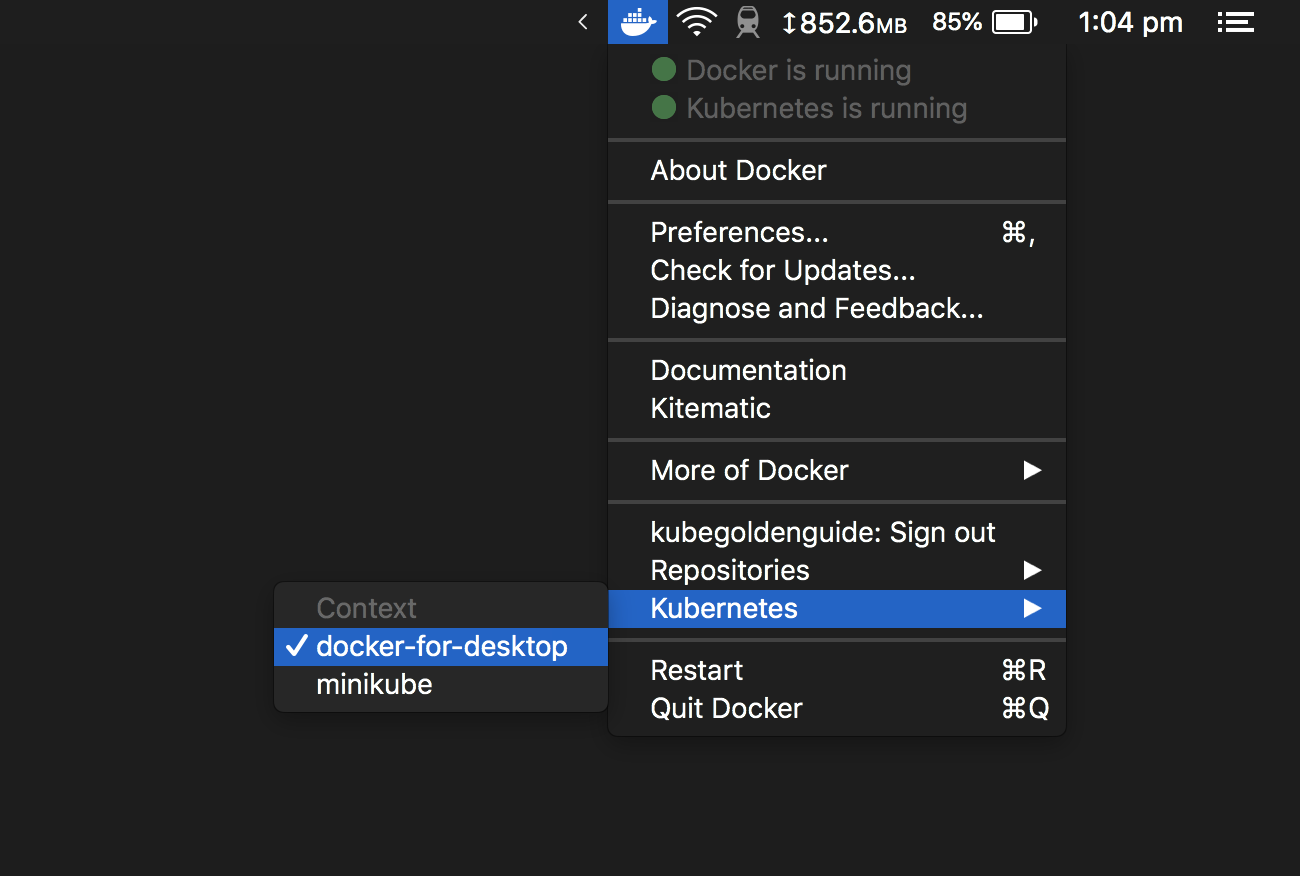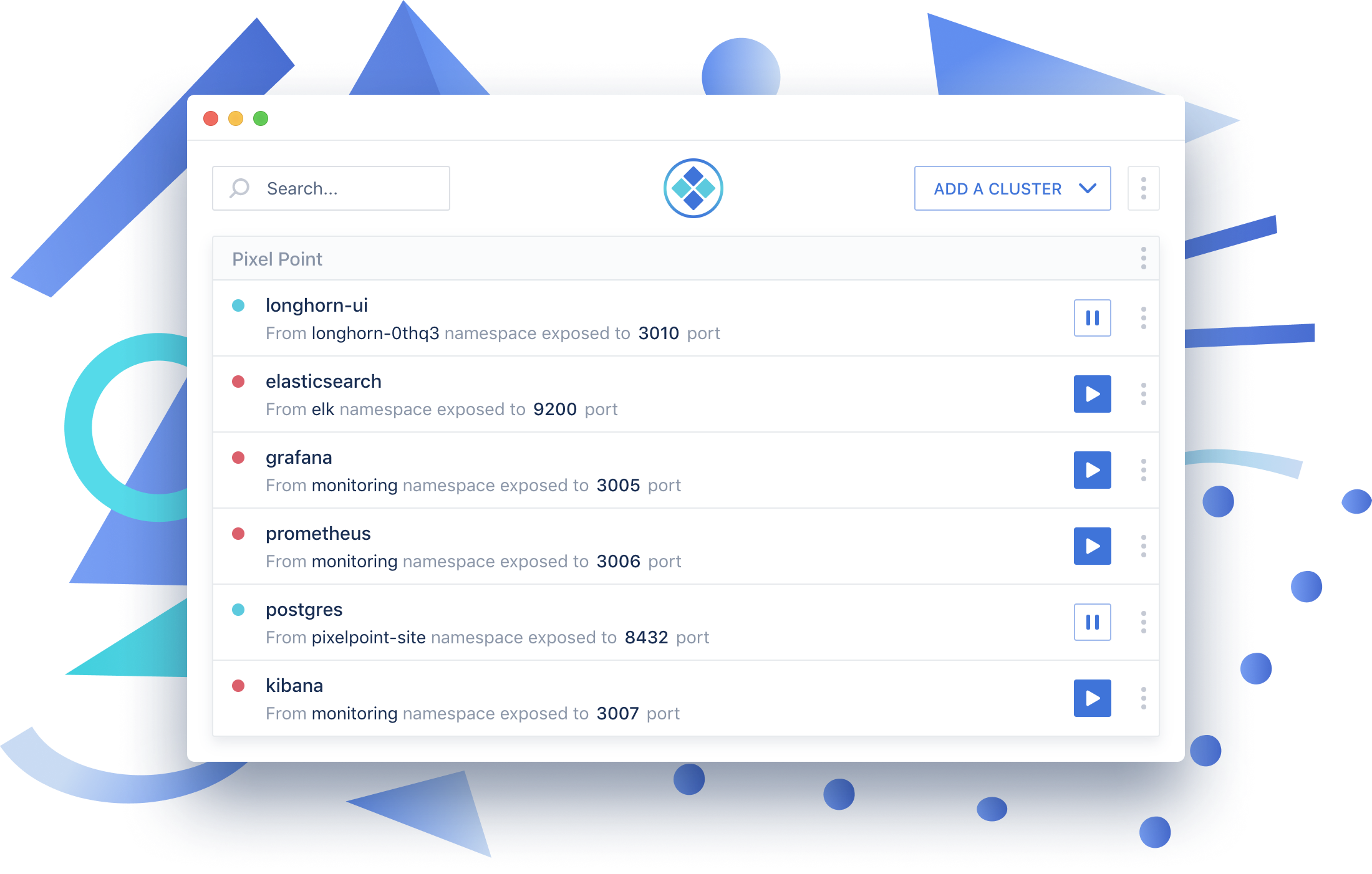Kube Mac OS
Kube Mac OS
Homebrew is an open-source package manager for macOS that offers an easy way to install software and tolls through the command line. If you are a coder, developer, Terminal lover, or more tech-savvy than an average Mac user, you can use Homebrew to simplify software installation on your Mac.
MQS Streaming Server (MAC OS) MQS Streaming Server (Windows OS) KANN CUBE USB DAC Driver. Driver File: KANN CUBE USB DAC Driver. This Driver is for Windows XP (32bit), Windows 7/8(32/64bit). In case of MAC OS, it can recognize without Driver install. Driver is installed only the first time. After that, it will be recognized. At the moment kubernetes server components doesn't ship any Darwin OS (MAC OS) binaries so the control plane component can't directly run under MACOS. Although they ship kubectl for Darwin OS which can use any API Server to connect to and deploy the applications. This article gives the steps to set up a web-based GUI Dashboard for Kubernetes locally. Kubernetes distribution does not come with its dashboard enabled.
Homebrew lets you use commands to download and install Python, Ruby, MongoDB, PHP, Git, Node.js, cask, colordiff, Nmap, and other Unix command-line utilities. In this guide, I’ll show you how to install Homebrew in macOS Catalina or M1 Mac.
Requirements to install Homebrew on Mac
- A 64-bit Intel or Apple Silicon M1 CPU
- macOS Mojave (10.14) or later
- Command Line Tools (CLT) for Xcode (steps 1 and 2 below)
Note: Some formulae require full Xcode installation. - A Bourne-compatible shell for installation (e.g., bash or zsh)
- Administrator access on Mac
- Internet connectivity
For some finer requirement details, please see the official page.
Once you satisfy the above requirements, see how to install Homebrew on macOS.
How to install Homebrew on macOS Catalina or M1 Mac
- Open Terminal and enter this command
xcode-select --install - Click Install from the popup. Go through the T&C and click Agree if you do. Let the download complete.
- To install Homebrew, enter the following command in the Terminal.
/usr/bin/ruby -e '$(curl -fsSL https://raw.githubusercontent.com/Homebrew/install/master/install)' - You will have to enter your Mac’s password once. After that, the downloading and installation will begin. The total download size is around 400MB. It will take some time.
Verify Homebrew installation in macOS
- Open Terminal and type
brew -v - You will see the version of Homebrew installed on your Mac.
Tip: brew doctor lets you know about Homebrew status, issues, and updates, if available or required.
Now that you have installed Homebrew, let’s see how to use it.
How to use Homebrew to install a package on Mac
- To see the full list of packages:
brew formulae - To search a software package:
brew search packagename - Get information about a package:
brew info packagename - To download and install:
brew install packagename
For example, if I have to install speedtest-cli, here is how the command looks:brew install speedtest-cli
After installation, enter speedtest-cli in the Terminal to run this command. - Pro Tip: You can install not only command-line apps but also GUI (Graphical User Interface) apps via Homebrew. For this, use
brew install --cask app-name. For example,brew install --cask firefoxorbrew install --cask google-chromeYou can see the full list here. - To see all the apps installed by Homebrew on your Mac:
brew list
Tip: Packages are usually installed in this folder:/usr/local/Cellar
In case you do not find this folder, enterbrew --prefixin the Terminal to see the folder location. - To update the package:
brew update packagename - For removing an installed package:
brew remove packagename - To know what else you can do:
man brew
How to update or remove Homebrew from your Mac
At times, Homebrew is updated automatically when you run commands. But you can also update it manually by entering brew update in the Terminal.
In case you no longer need Homebrew, run the following command to uninstall Homebrew and all the installed packages.ruby -e '$(curl -fsSL https://raw.githubusercontent.com/Homebrew/install/master/uninstall)'
Loving the ease and simplicity of Homebrew!
I hope the above guide helped you download, install, and use Homebrew. Once you start using it, there is no going back. Finally, I would like to tell you about four handy command-line programs I love.
Youtube-dl: This lets me download videos from YouTube and other places. More info.speedtest-cli: I can see my download and upload speed via this. More info.imagemagick: Lets me convert an image to another format and make simple edits. More info.wifi-password: This brilliant yet straightforward command shows me the Wi-Fi password of the currently connected network. Super handy!
You will also love to read:
So you want to install Kubernetes on your Mac? The easiest way to get going is to run Kubernetes on Docker, using Talos OS - Talos OS will install and configure Kubernetes on Docker for you. (Note that Docker Desktop does have support for Kubernetes built in, but it is an older version of Kubernetes, and limited to a single node cluster.) You can be up and exploring Kubernetes on Mac within 10 minutes, with all the advantages of an API managed, immutable, secure Kubernetes OS.
First, install Docker Desktop.
Run Docker, give it the access it asks for, and you'll see it chugging along in the menu bar. It will launch a wizard, which you can skip if you just want to run Talos and Kubernetes on your Mac.

A key component of Talos is talosctl, the CLI (Command Line Interface) which lets you interact with the OS running on your kubernetes nodes (virtual nodes in this case, but the same talosctl is used for Kubernetes on bare metal, VMWare, or cloud providers).
To get going with talosctl you need to download the latest release as shown below (or from Github here.)
Now, test if it’s working by running:
Creating a local cluster is as simple as:
This command will create a simple two node cluster, with one master node and one worker node.
You can create a more complex kubernetes cluster on your Mac by passing in different parameters. Note that creating a larger cluster in Docker uses a lot of resources and takes quite a while, and is not recommended unless you have a powerful Mac. e.g. to create a cluster with 3 masters and 1 worker, use:
(Note that in order to install a new Talos OS based kubernetes cluster on the same Mac, you should talosctl cluster destroy the old cluster first, else you will run into naming conflicts. You can manually assign unique names and run multiple clusters - but it's certainly easier to just destroy the old cluster, then create a new cluster.)
The creation of the kubernetes cluster takes a while to process (a few minutes on my Macbook Pro for a two node cluster), and you can expect to see some errors, as below, where the installation system expects services to be up, but they take longer on a docker based system than expected. Note that once the services do start, the installation proceeds correctly.
As well as the command output, you can also watch the progress from the Docker dashboard (click the Docker icon in the menu bar and select Dashboard.) Click the node talos-default-master-1, and you will see the logs of the master node, and be able to watch services start:

Once the cluster create command has exited successfully, you need to set the Kubernetes configuration so it knows how to reach the API server:
talosctl config nodes 10.5.0.2
talosctl kubeconfig .
kubectl --kubeconfig kubeconfig config set-cluster talos-default --server https://127.0.0.1:6443
Finally, we just need to modify the talosctl config to specify which nodes you want to get information on. Talosctl can operate on one or all the nodes in the cluster - this makes cluster wide commands much easier.
talosctl config nodes 10.5.0.2 10.5.0.3
Note that these are the default node addresses for a one master, one worker cluster. If you already have a variety of containers running, or created more master or worker nodes, you can verify the node addresses using docker inspect or talosctl cluster show
You now have a complete (albeit simple) kubernetes cluster running on your mac. You can use talosctl to operate and examine the nodes. Some commands to try are:
For further options with talosctl see the getting started guide and the talosctl documentation.
You can also explore kubernetes on your Mac with kubernetes commands (passing in the kubeconfig):
Kube Mac Os Catalina
There are other more flexible ways to run Kubernetes on MacOS - we'll explore a qemu based installation in a later article. But if you want to get Kubernetes on a Mac up and running quickly so you can start learning and testing - Docker and Talos OS is the way to do it. And if you want to see similar ease of use in bare metal kubernetes - check out Sidero!
Kube Mac OS
